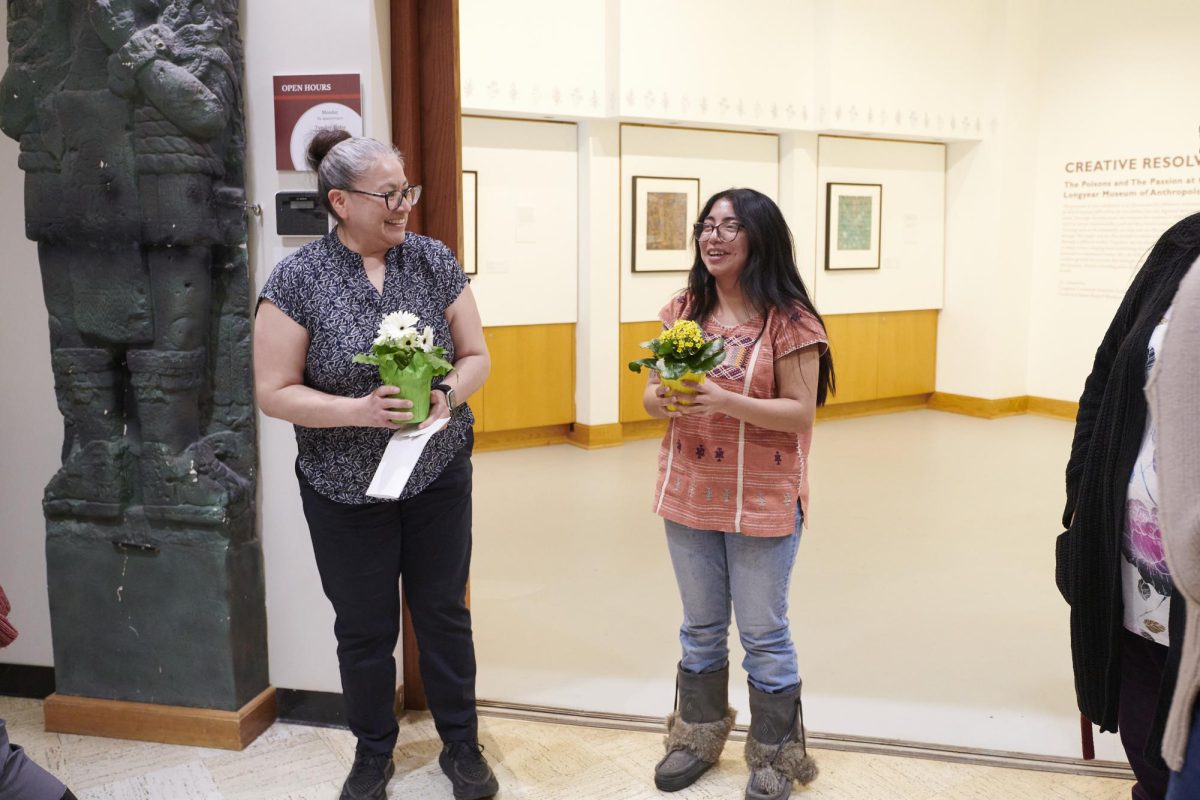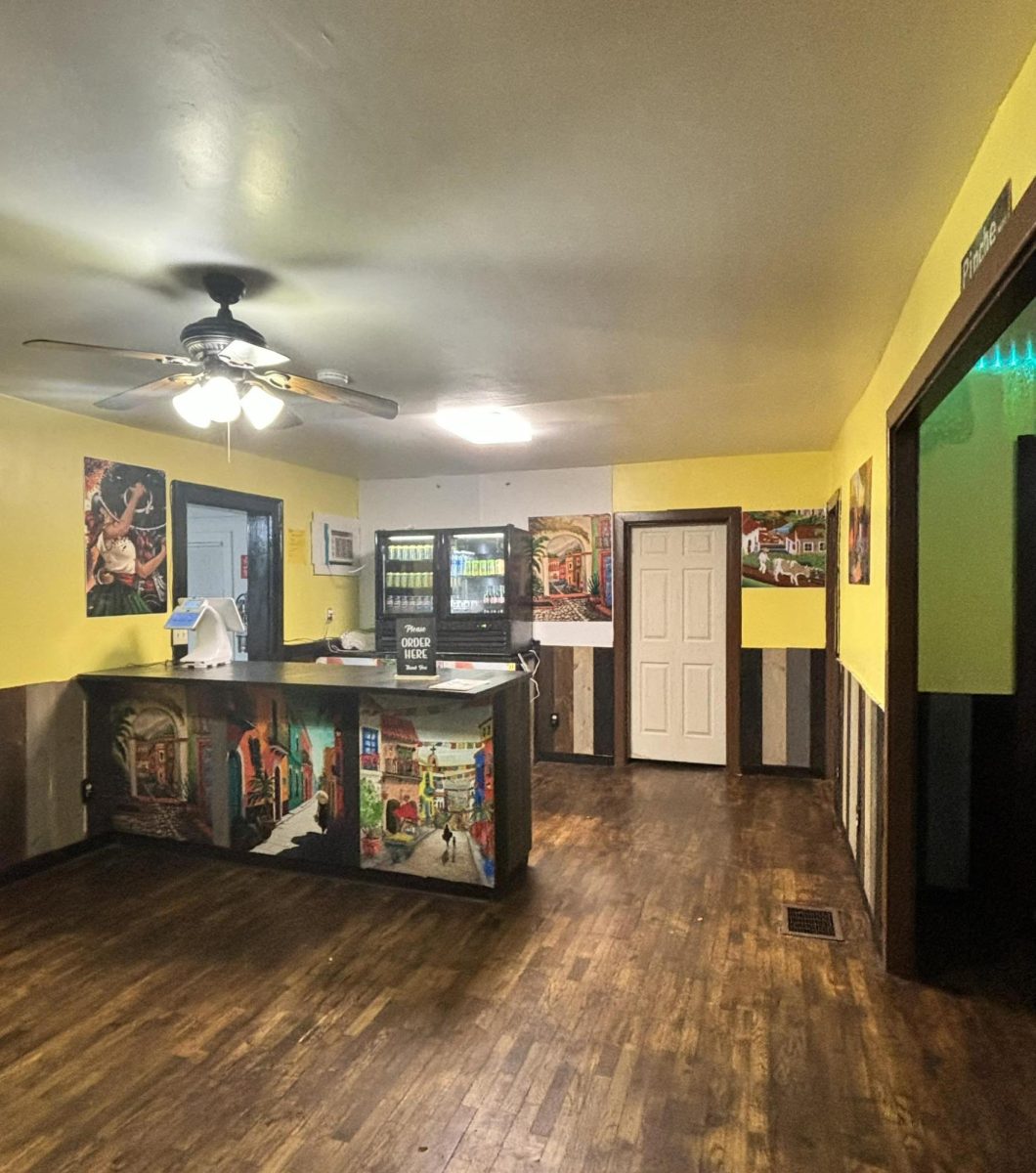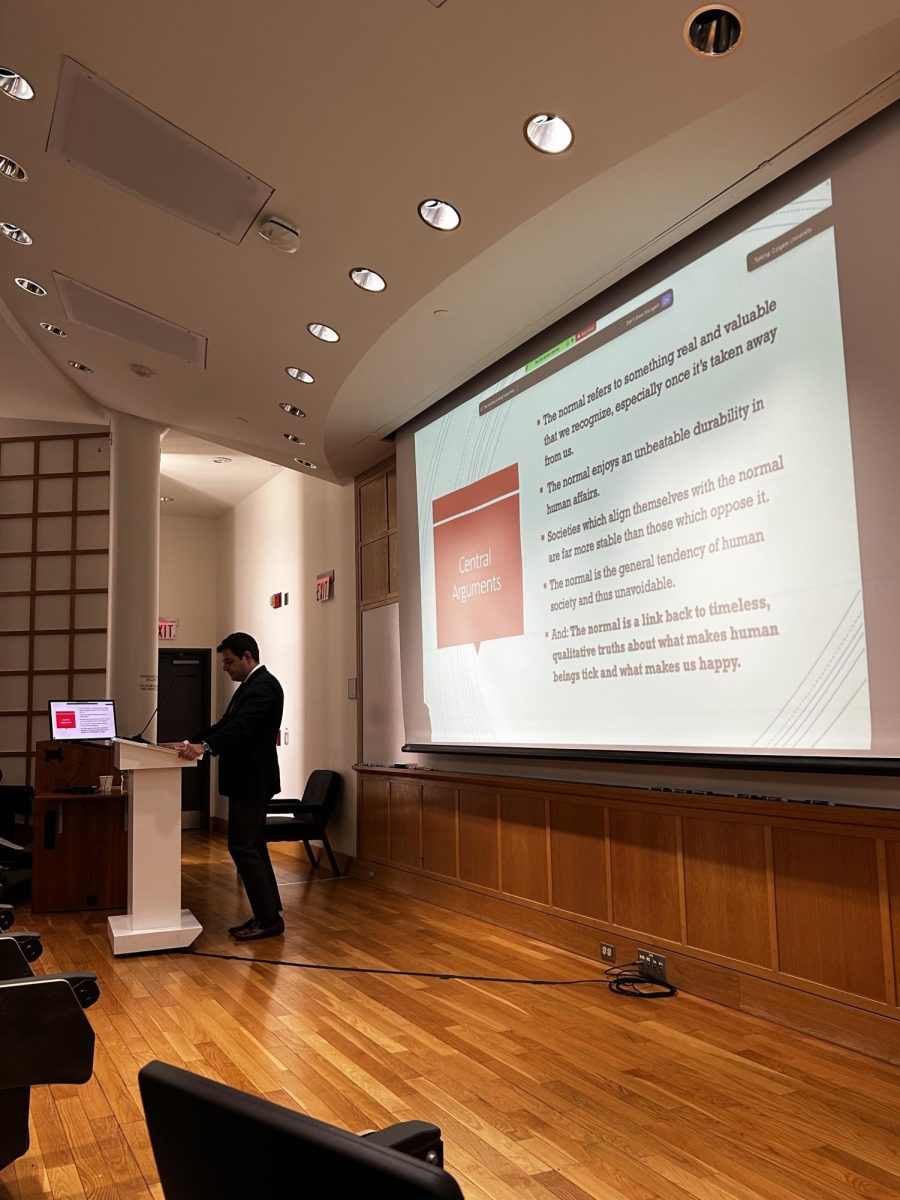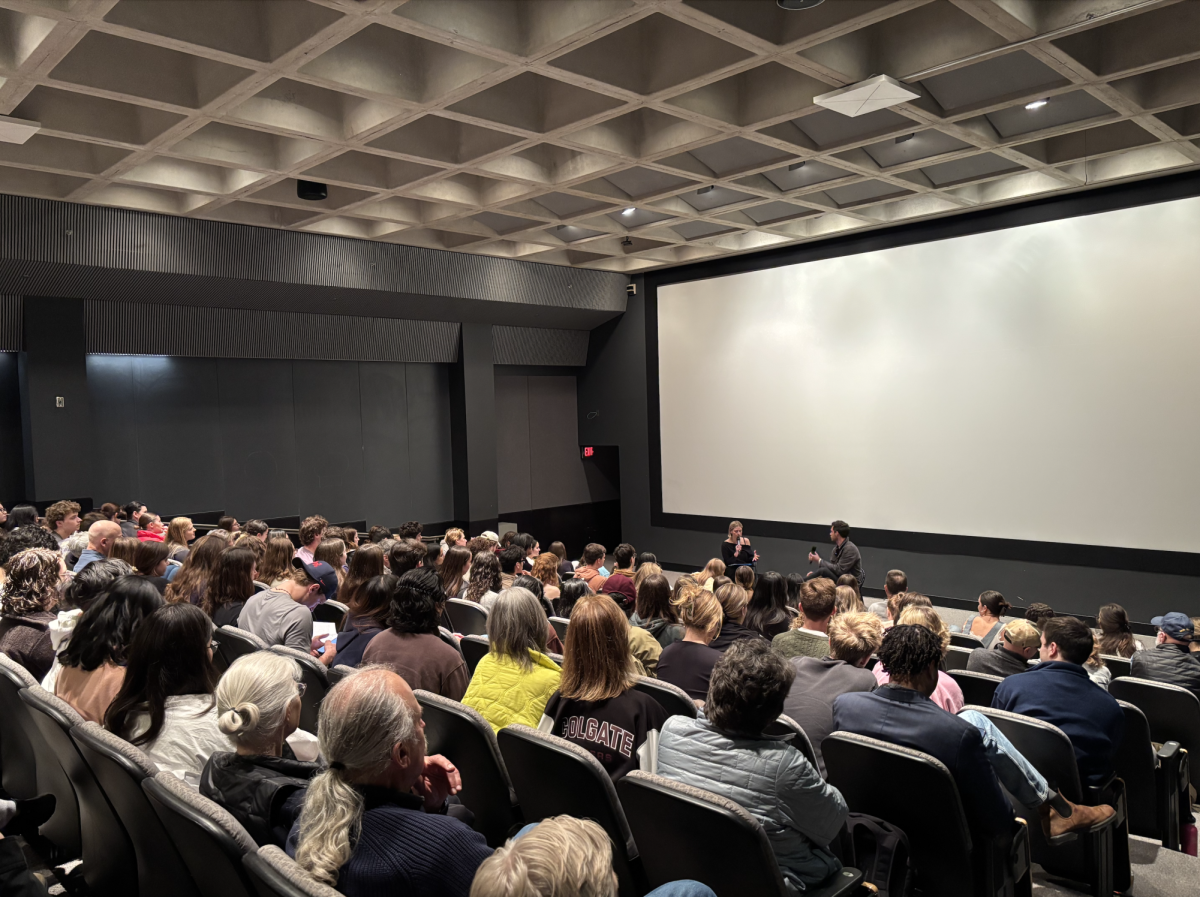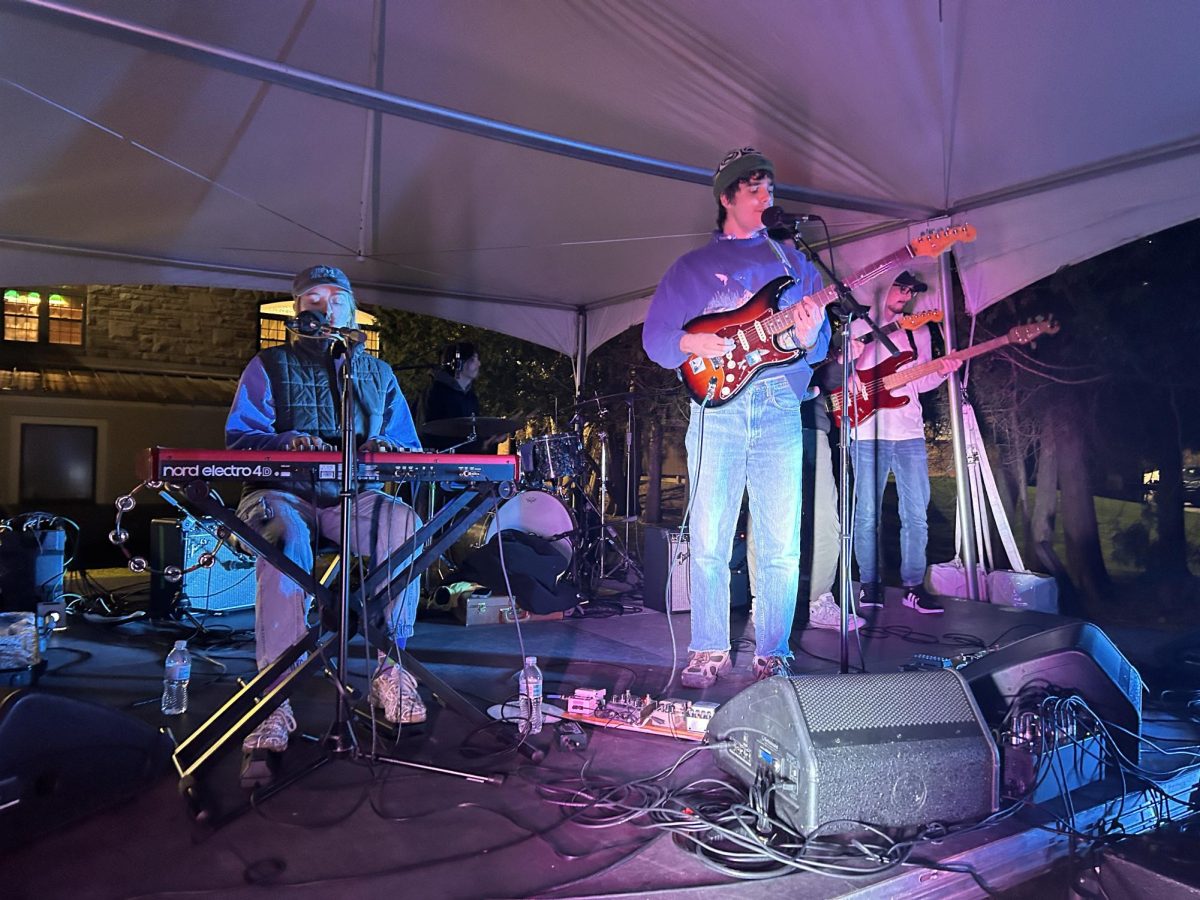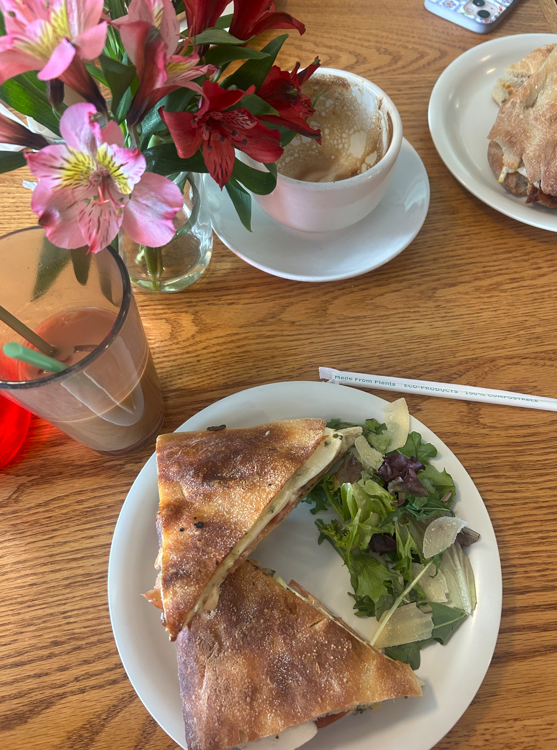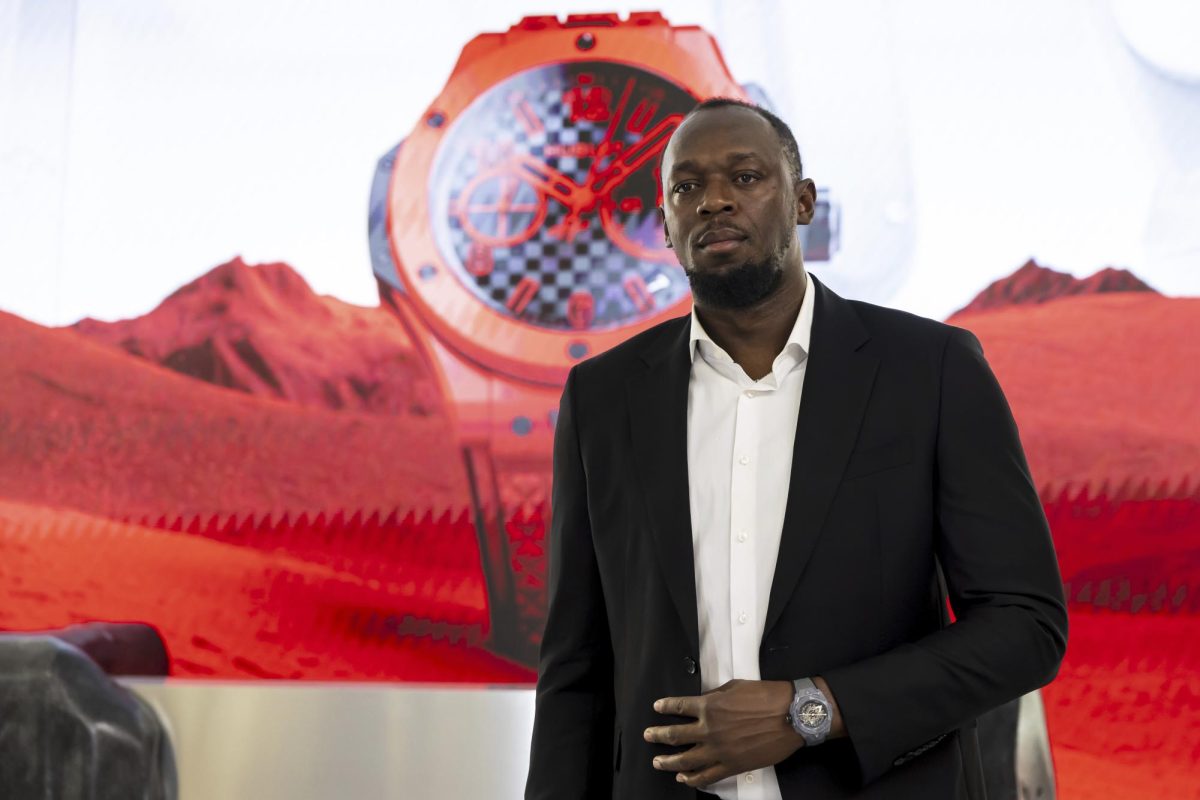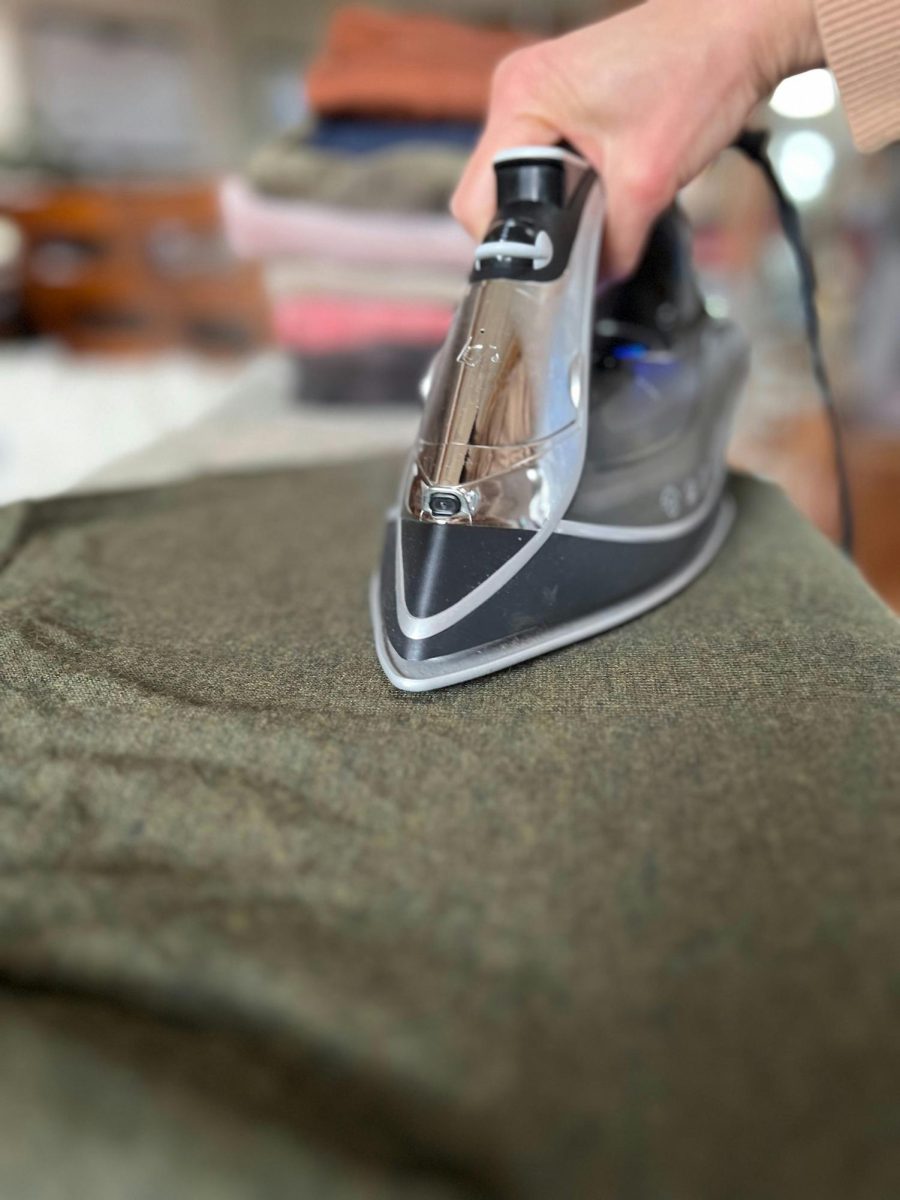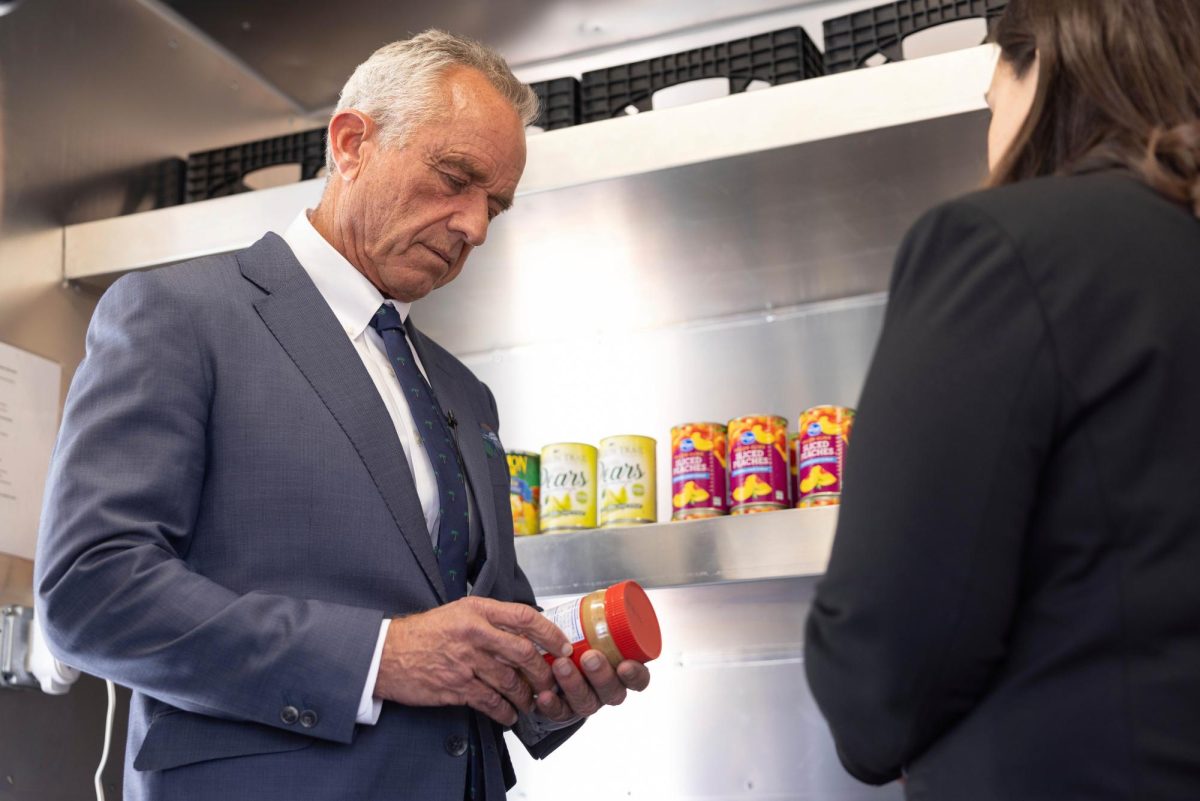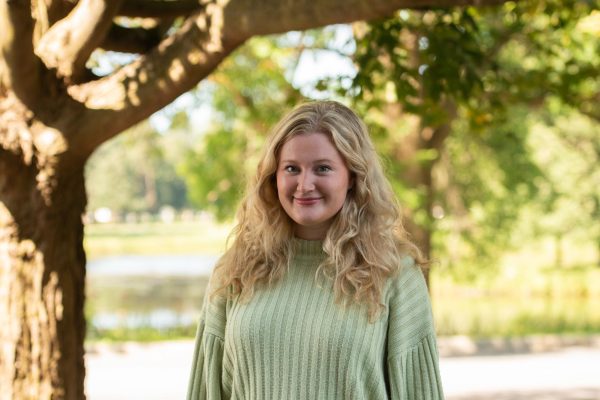Colgate University’s Longyear Museum of Anthropology hosted a re-opening reception featuring its new exhibition, “Creative Resolve,” on Feb. 29, after being closed during the Fall 2023 semester. The collection was curated by Longyear curatorial intern and senior Raquel Marquez-Guerrero as well as curatorial assistant Summer Frazier. It featured artwork relating to nature and growth from Indigenous artists.
Co-Director of University Museums and curator of the Longyear Museum of Anthropology Rebecca Mendelsohn spoke about how this collection is a representation of the museum’s future goals.
“Things we talked about a couple years ago […] [included] decolonizing museum spaces by centering Indigenous voices, mining the current collection for new narratives, acquiring new works that support local artists and, in particular, building new relationships with Haudenosaunee artists — and incorporating students throughout the entire process,” Mendelsohn said.
Frazier, who is a member of the Onondaga Nation and part of the Eel Clan, was inspired by notable Potawatomi botanist and author Robin Wall Kimmerer’s book “Braiding Sweetgrass” for this exhibition. Frazier wanted to create something that addressed the difficult things going on in the world in a healing way. She was particularly moved by the healing relationship between nature, culture and art.
“We started incorporating our new acquisitions into this exhibition, as well, so we could expand it to other areas of thinking, like how objects play a role in stopping conflict or how in a culture, inspiration can move you to act on your instinct or act on your inner self,” Frazier said. “Being from a culture that practices this regularly, we call it ‘waking dream.’ It’s paying attention to your dreams, but they also happen when you are awake.”
Frazier further explained what lessons come from these concepts and the connection to Indigenous culture.
“One of the things we do is act on them. You’ve got to act on them. So after years of practicing this, it forces you to confront things in front of you, value them for what they are and find a way through. There are some stories in our culture that talk about certain things like this: not being afraid, don’t act out of fear, acknowledge something isn’t in your control so you can keep your mind and deal with a situation,” Frazier said.
Marquez-Guerrero was asked by the museum to collaborate with Frazier and was immediately immersed in the inspirational theme.
“Her vision was something that I wanted to help create and emphasize our own teachings from our Indigenous communities. I was reminded of my trip back to my family’s village, pueblo, in Oaxaca, Mexico. I wanted to emphasize the different ways that we understand healing and the ways that my community uses art and medicinal plants,” Marquez-Guerrero said.
Marquez-Guerrero and Frazier prioritized different ways to incorporate all types of community members in the opening reception and throughout their exhibition. Marquez-Guerrero is excited about the direction Longyear is going and hopes that Native and Indigenous awareness will spread across campus.
“There are currently strategic discussions being held to get input on the new directions of museums. There are recent acquisitions that are displayed that are from local Onondaga citizens. This is something that is important to me to see happening as there is not a lot of support or awareness of Native and Indigenous issues on campus. I hope that we start seeing more and more support for Native and Indigenous students and staff at Colgate and more initiatives to bring more Native and Indigenous faculty, staff, and students,” Marquez-Guerrero said.
Marquez-Guerrero continued to explain that their hope for the exhibit is that it increases awareness of the Indigenous Nations.
“Finally, I will say that there are very few spaces where Colgate acknowledges the caretakers and original people of the lands we settle on. I hope that, in general, but with this exhibition [specifically], people become more aware of the Oneida Nations as well as the other nations of the Haudenosaunee confederacy,” Marquez-Guerrero said.
Senior and Museum Ambassador Gabriella Amatto was happy with the successful reception and the work Longyear has been doing.
“It’s really great to see the Longyear Museum had such a successful opening after it’s been closed for so long,” Amato said. “The Longyear team has been doing so much work behind the scenes related to repatriation and collection management.”
Amato also discussed her favorite piece on display.
“My favorite piece was a beaded belt that was on display because the label talked about how in the process of building and weaving the belt requires the artists to continuously add new beads,” Amato said. “This relates back to Indigenous artists continuing to create beautiful pieces relating to their cultures, even when their voices have been historically silenced.”
The exhibition will be open through May 19 for students, faculty and community members to enjoy.


